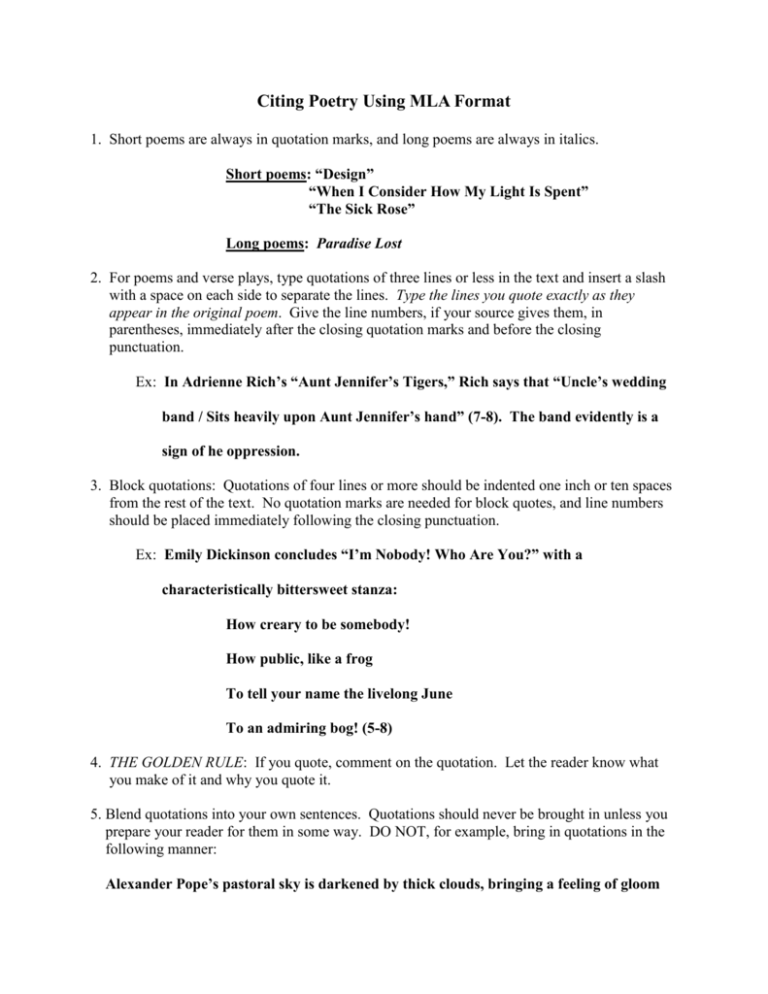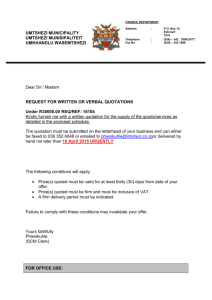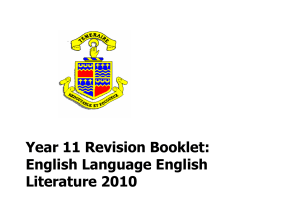MLA Poetry Citation Guide: Formatting & Examples
advertisement

Citing Poetry Using MLA Format 1. Short poems are always in quotation marks, and long poems are always in italics. Short poems: “Design” “When I Consider How My Light Is Spent” “The Sick Rose” Long poems: Paradise Lost 2. For poems and verse plays, type quotations of three lines or less in the text and insert a slash with a space on each side to separate the lines. Type the lines you quote exactly as they appear in the original poem. Give the line numbers, if your source gives them, in parentheses, immediately after the closing quotation marks and before the closing punctuation. Ex: In Adrienne Rich’s “Aunt Jennifer’s Tigers,” Rich says that “Uncle’s wedding band / Sits heavily upon Aunt Jennifer’s hand” (7-8). The band evidently is a sign of he oppression. 3. Block quotations: Quotations of four lines or more should be indented one inch or ten spaces from the rest of the text. No quotation marks are needed for block quotes, and line numbers should be placed immediately following the closing punctuation. Ex: Emily Dickinson concludes “I’m Nobody! Who Are You?” with a characteristically bittersweet stanza: How creary to be somebody! How public, like a frog To tell your name the livelong June To an admiring bog! (5-8) 4. THE GOLDEN RULE: If you quote, comment on the quotation. Let the reader know what you make of it and why you quote it. 5. Blend quotations into your own sentences. Quotations should never be brought in unless you prepare your reader for them in some way. DO NOT, for example, bring in quotations in the following manner: Alexander Pope’s pastoral sky is darkened by thick clouds, bringing a feeling of gloom that is associated with the feeling that can be sensed at a funeral. “See gloomy cloudes obscure the cheerful day” (5). This abrupt quotation throws the reader off balance becasue it is not blended into the previous sentence. It is better to prepare the reader to move from the discourse to the quotation, as in the following revision: Alexander Pope’s pastoral scene is marked by sorrow and depression, as though the spectator, who is asked to “see gloomy clouds obscure the cheerful day” (5), is present at the funeral. Here the quotation is made an actual part of the sentence. This sort of belending is satisfactory, provided the quotation is brief. 6. Use three spaced periods (an ellipsis) to show omissions. Whether your quotation is long or short, you will often need to change some of the material in it to conform to your own sentence requirements. You might wish to omit something from the quotation that is not essential to your point. Indicate such omissions with three spaced periods ( . . . ). Use square brackets to insert your own explanations within quotations. If you add words of your own to integrate the quotation into your train of discourse or to explain words that may seem obscure, put square brackets around these words. Ex: In the “Tintern Abbey Lines,” Wordsworth refers to a trance-like state, in which the “affections gently lead . . . [him] on” (42-3). He is unquestionably describing the state of extreme relaxation, for he mentions that the “motion of . . . human blood [was] / Almost suspended [i.e., his pulse slowed]” (44-7) and that in these states he considered himself to be “a living soul” (49). 7. Like any literary work, when discussing poetry use the present tense of verbs.







